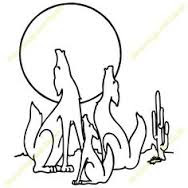It's almost done! Seasons and Seasonings of the Southwest is the title of a book I have been compiling and preparing for publication. The theme of the book is how everyday life in the Southwest can be enjoyed in each of the four seasons of the year. Included are short personal essays that have been languishing in a folder in my desk drawer, and also favorite recipes, borrowed from various sources, including friends and family members.
The text is complete. What I am searching for are graphics to feature on the cover. My husband Wayne and I had a discussion recently about what images would be the quintessential Southwestern icons. When you hear the term "Southwest," what picture comes to mind?
Would the image come from the food category?
 |
| Chiles |
 |
| Corn |
To say that chiles are used in most Southwestern recipes is not overstating their importance. What would enchiladas, chilaquiles, huevos rancheros, tamales and pico de gallo be without red or green chiles of varying degrees of potency? And corn is essential to the corn tortilla, used as a basis for many Southwestern dishes, as well as being a great scooper at meal times.
Or would the best representation of Southwestern life come from the animal kingdom? The Southwest still has large open spaces that provide a habitat for the hardy creatures of the desert.
 |
| Iguana |
 |
| Roadrunner |
 |
| Coyotes |
Or how about images of the Old West? Cowboys, ranchers, railroaders, and dance hall girls all played significant roles in creating modern Southwestern culture.
 |
| Fancy boots |
 |
| Wagon and oxen |
Native American cultures provide artistic images to the cultural mélange that is the Southwest.
Kokopelli is venerated by some Native American tribes as the fertility deity who presides over childbirth, agriculture, and music. He is also know as the trickster god.
 |
| Kokopelli, |
Architectural styles in the Southwest are unique, with the most recognizable being Territorial, Spanish-Colonial, and Pueblo.
 |
| Pueblo style architecture |
What image would you like to see on the cover of a book about the Southwest? What would encourage you to open the book and read further? I'm really looking for some opinions and ideas here!